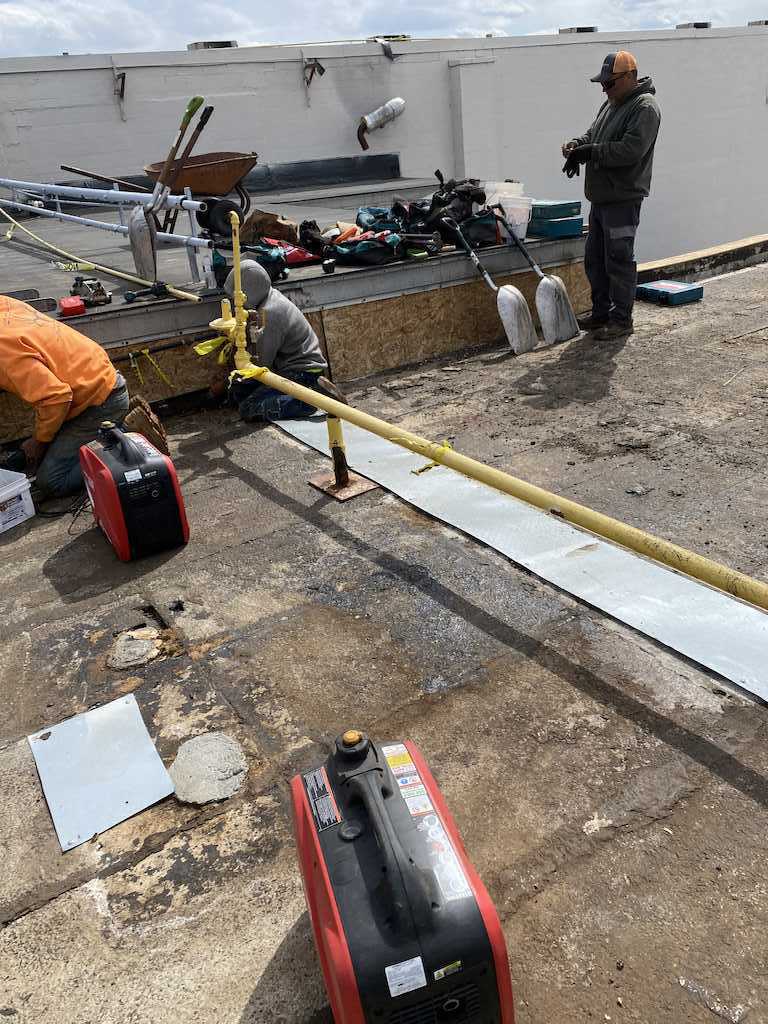Your roof is one of the most important parts of your home. It protects you and your family from the outside elements and keeps your home in good condition. One of the most essential components of a roof is underlayment.
This layer helps keep moisture out and maintains the integrity of your roof. Here at our roofing company, we believe that it is important to use only the best materials on your roof, including high-quality underlayment.
In this guide, we’ll discuss what roofing underlayment is, why it’s important, and the different types of underlayment available.
What Is Roofing Underlayment?
Underlayment is a layer of material that goes beneath your roof shingles. It helps to keep moisture out and maintain the integrity of your roof. There are many different types of underlayment available, but not all are created equal.
You’ll need a high-quality underlayment to keep your roof waterproof and free of moisture damage. Underlayment is especially important in areas with a lot of rainfall or snowfall.
Why Is Roofing Underlayment Important?
Your roof is one of the most important parts of your home. It protects you and your family from the outside elements and keeps your home in good condition. When a roof is damaged it can compromise the whole structure of your building.
One of the most essential components of a roof is underlayment.
This layer helps keep moisture out and maintains the integrity of your roof. Here at our roofing company, we have customers come to us with roofing issues often. They tell us they don’t understand what the issue is because the roof looks fine from the exterior.
The reality is the roof is in good shape, but the underlayment is damaged and that’s what’s causing the problem. It can lead to complete roof replacement.
Common Signs The Roofing Underlayment Is Damaged
Thankfully, there are some very clear signs that you need to get a roofing contractor to help replace your underlayment. Regular roof maintenance could also help spot these signs.
- The roof is leaking
- Shingles are buckling or curling
- Asphalt roofing is bubbled
- There are visibly black streaks on the roof
- Moss or algae is growing on the roof
All of these are signs that your roofing underlayment may be damaged and needs to be replaced. If you notice any of these problems, call us right away.
How Much Does It Cost To Replace Roofing Underlayment?
The cost to replace roofing underlayment can vary depending on the type of material you choose and the size of your roof.
It is a good idea to get an estimate from a roofing company before starting any repairs. A legitimate and experienced roofing company will be able to give you an estimate for the cost of repairs and replacement but only after making a thorough assessment of the roof.
The assessment is important. Don’t trust anyone who quotes a price for repairs without making a thorough assessment. It’s impossible to provide a quote without first knowing all the details including the size of the roof, elevation, access, the extent of the damage, and more.
How do I Choose The Right Roofing Underlayment?
There are many different types of roofing underlayment on the market. You’ll need to choose one that is best suited for your home and climate.
The most common type of underlayment is asphalt-based felt. This type is waterproof and can withstand a lot of wear and tear. It’s also easy to install and relatively affordable.
If you’re living in an area with a lot of rainfall or snowfall, you’ll want to use an underlayment that is specifically designed for those conditions. There are many different types of weather-resistant underlayment available, including synthetic and rubber-based products.
What Are The Different Types Of Roofing Underlayment?
When choosing roofing underlayment, you’ll need to consider the climate where you live and the type of roof you have.
If you have an asphalt roof, you’ll want to use an asphalt-based felt underlayment. This type is waterproof and can withstand a lot of wear and tear. It’s also easy to install and relatively affordable.
When choosing roofing underlayment the cost is a concern for a lot of customers. However, if you choose the wrong type to save money, you could end up paying more in the long run due to the expense of repairs. So, our advice is to base the underlayment you choose on the weather at your property, not your bank balance.
Here are some examples.
Roofing Felt Or Tar Paper
This is the most common type of roofing underlayment and is used in most climates. It is made of asphalt-coated fiberglass or organic felt and can be used on roofs with slopes up to 12:12.
Synthetic Membranes
These are lightweight materials that are resistant to moisture, tears, and punctures. They are commonly used in climates that have high winds or storms.
Ice And Water Shield
This is a waterproof membrane that is installed in the valleys of your roof to prevent ice dams and water damage. That makes this perfect for cold climates like Canada and Alaska.
Moisture Barrier
This is a sheet of plastic that is installed under the shingles to prevent moisture infiltration. Any wet climate will benefit from a moisture barrier, in dry conditions they can have the opposite effect and create condensation, so take care.
Final Thoughts
Roofing Underlayment is one of the most important parts of your home. It’s essential to keep it in good condition. When choosing an underlayment, be sure to consider the climate where you live and the type of roof you have.
If you need help, don’t hesitate to contact us here at Midstate Construction and Roofing Incorporated, we operate within a 20-mile radius around Effingham, IL, and its surrounding communities.

